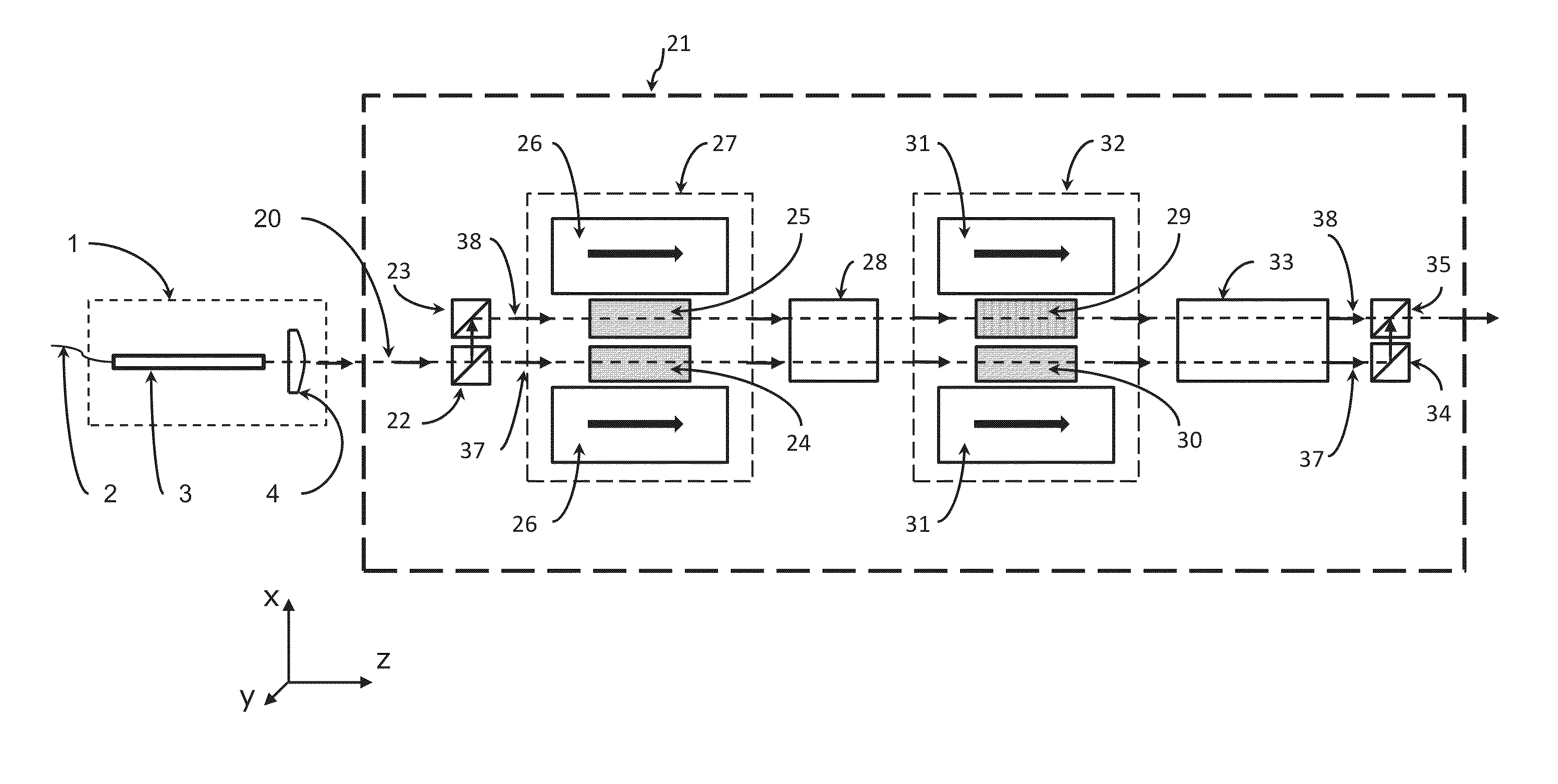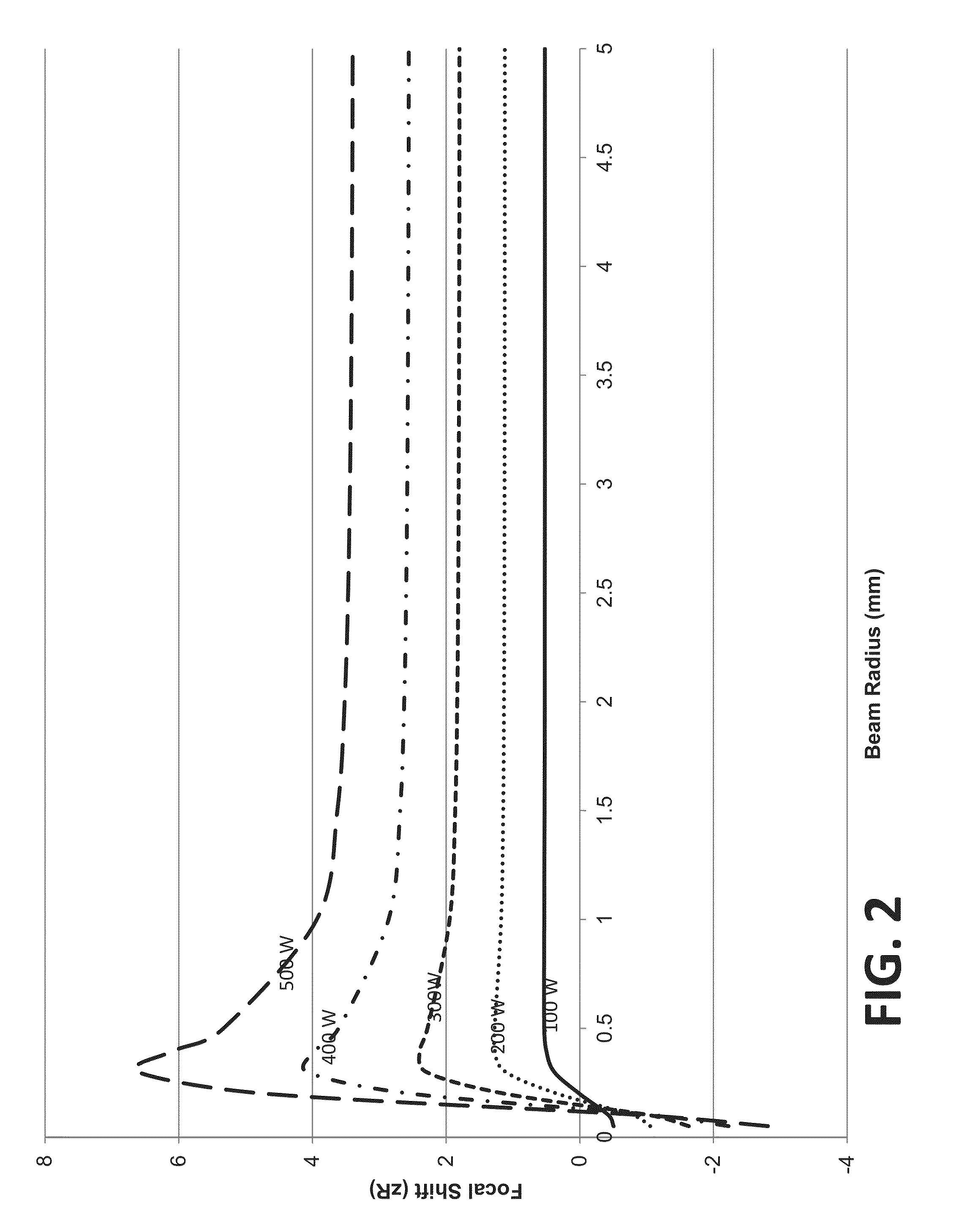Low focal shift kW class optical isolator
a technology of optical isolators and low focal shift, which is applied in the field of low-frequency optical isolators, can solve the problems of unstable laser running, irreparable damage to the laser itself, and thermal effects of optical isolators suitable for use with high-power lasers, so as to reduce thermal birefringence, facilitate use, and preserve the effect of highly stable beam parameters
- Summary
- Abstract
- Description
- Claims
- Application Information
AI Technical Summary
Benefits of technology
Problems solved by technology
Method used
Image
Examples
Embodiment Construction
[0051]The invention can best be understood by considering focal shifts due to thermal tensing versus incident power when varying the collimated beam radius at the thermal lens. FIG. 1 illustrates an optical system 200 (prior art) modeled using the ABCD matrix method and Gaussian beams. A beam source 212 produces an optical beam 214 of variable diameter that has a central axis 216. The beam 214 is directed on a path along the central axis 216 through a thermal lens 218, such as formed of terbium gallium garnet (TGG), and a focusing lens 220, with a resultant high power ray path 222 and low power ray path 224 characterized by a focal shift from Point AA to Point AB along the central axis 214 upon increased power (with resultant heating effects).
[0052]The TGG thermal lens 18 can be modeled after the methods routinely used for solid-state lasers using known values typical for TGG. The resulting thermal lens focal length as a function of power is then modeled as a paraxial thin lens in a...
PUM
| Property | Measurement | Unit |
|---|---|---|
| power | aaaaa | aaaaa |
| diameter | aaaaa | aaaaa |
| diameter | aaaaa | aaaaa |
Abstract
Description
Claims
Application Information
 Login to View More
Login to View More - R&D
- Intellectual Property
- Life Sciences
- Materials
- Tech Scout
- Unparalleled Data Quality
- Higher Quality Content
- 60% Fewer Hallucinations
Browse by: Latest US Patents, China's latest patents, Technical Efficacy Thesaurus, Application Domain, Technology Topic, Popular Technical Reports.
© 2025 PatSnap. All rights reserved.Legal|Privacy policy|Modern Slavery Act Transparency Statement|Sitemap|About US| Contact US: help@patsnap.com



